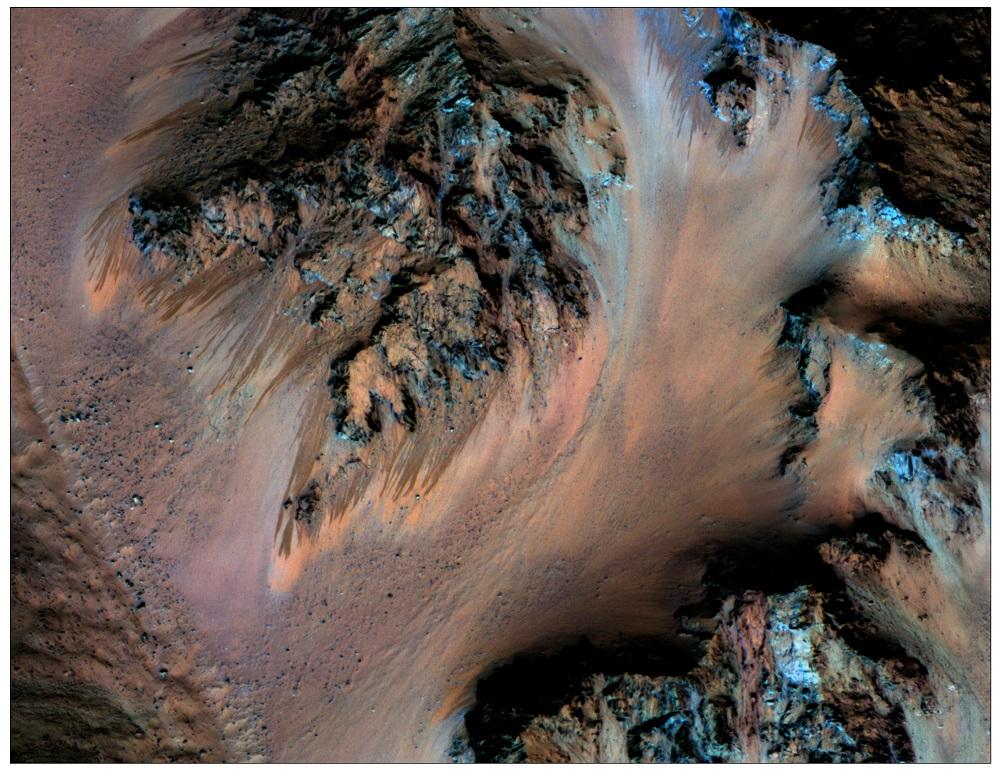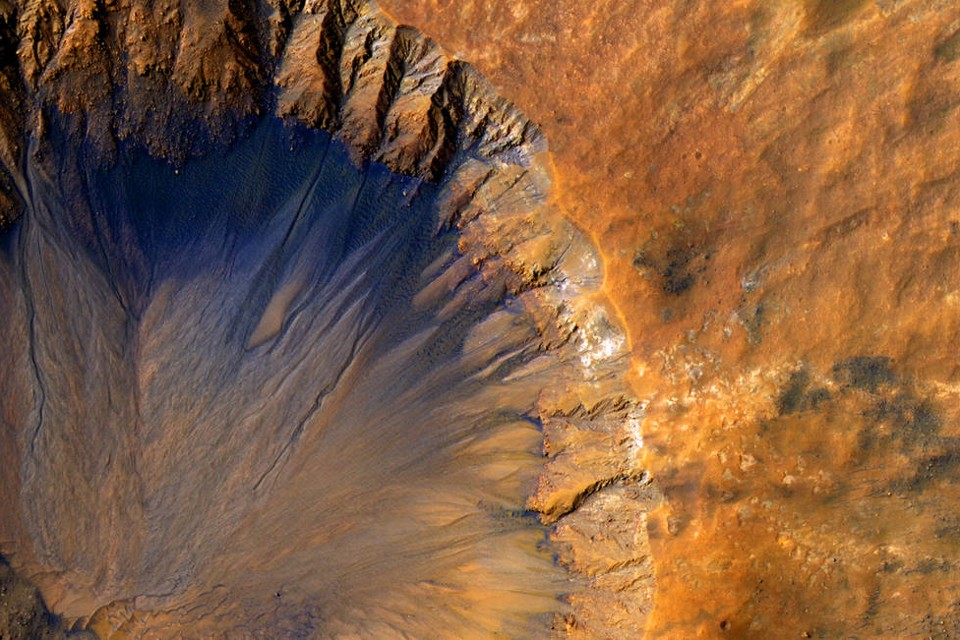World News – Scientists have discovered the strongest evidence yet that “flowing liquid water” exists on Mars, the National Aeronautics and Space Administration said Monday morning.
 Imaging instruments aboard NASA’s Mars Reconnaissance Orbiter identified evidence of “hydrated minerals” called perchlorates that have formed streaks on slopes on Mars’ surface, the agency said.
Imaging instruments aboard NASA’s Mars Reconnaissance Orbiter identified evidence of “hydrated minerals” called perchlorates that have formed streaks on slopes on Mars’ surface, the agency said.
“The most exciting thing about the announcement today is that it would be possible to have life on Mars,” said NASA’s John Grunsfeld at a press conference Monday.
Some perchlorates are able to keep water from freezing even at temperatures as cold as -94 degrees Fahrenheit. The perchlorates on Mars are forming the streaks, called recurring slope lineae (RSL), on the Martian slopes during the planet’s warm season, when temperatures climb above -10 degrees Fahrenheit. The streaks then disappear during the cold season.
“Something is hydrating these salts, and it appears to be these streaks that come and go with the seasons,” Lujendra Ojha, one of the researchers on the project, said in a statement. “This means the water on Mars is briny, rather than pure. It makes sense, because salts lower the freezing point of water. Even if RSL are slightly underground, where it’s even colder than the surface temperature, the salts would keep the water in a liquid form and allow it to creep down Martian slopes.”
The team is publishing its findings in the journal Nature Geoscience.
Mars is in many ways similar to Earth, said Jim Green, NASA’s director of planetary science. The planet had an extensive atmosphere, and was partly covered in at least one large ocean. It lost all of its surface water to dramatic changes in its climate.
Still, the planet has appeared to retain some of that moisture.
“It is very likely, I think, that there is microbial life somewhere in the crust of Mars,” said Alfred McEwen of the University of Arizona, who also worked on the study.
Wilhelm noted that in addition to supporting Martian life, water may be an important resource for human exploration and activity on the planet, by making it easier and less expensive to travel to the Red Planet.
Grunsfeld said Mars has other resources that may make it possible to grow plants, including nitrogen and carbon dioxide. Would-be farmers could build greenhouses on the planet that could grow plants—even food for inhabitants.
He said that today’s announcement gives more reason to send astrobiologists and other scientists to answer the question of whether there is life on the planet.
“We can answer that question by sending rovers and by sending people,” Grunsfeld said.
By Robert Ferris, CNBC

